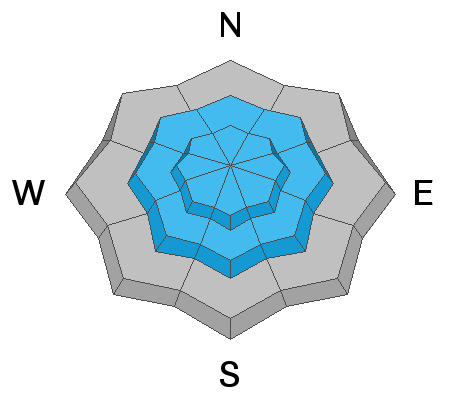This week is the third annual
Avalanche Awareness Week in Utah. A lot is going on with over 20 different events around the state. You can find all the events
HERE.
Batteries for Beacons runs through Dec 19. Get free batteries for your transceiver and a chance to win 1 of 10 Black Diamond Rescue Kits, 1 of 3 Mammut Barryvox transceivers, or 1 of 3 BCA Tracker transceivers. Stop at a
participating shop, fill out our survey and get a free set of batteries. Don't need batteries, but still want a chance to win? Simply
fill out the survey to be registered.
Currently - Temperatures are a few degrees on either side of 0° F and winds are out of the west/northwest. Between 9,500' and 10,500', winds are averaging in the teens with gusts in the 20's mph. At 11,000' winds are much stronger, averaging in the 40's with gusts in the 50's mph.
Snowfall began around 6 am on Thursday morning with approximate 24-hour snow totals:
Little Cottonwood Canyon -18" snow (1.4" water)
Big Cottonwood Canyon - 12-18" snow (1.2" water)
Park City Ridgeline - 12-14" snow (0.9" water)
For today, the National Weather Service has issued a Winter Storm Warning as snowfall is forecasted to develop around 8 am with periods of high-precipitation intensity likely. In areas favored by a northwest flow (such as Little Cottonwood Canyon), snow totals could easily exceed a foot before snowfall diminishes late afternoon. Northwesterly winds will average in the teens with gusts in the 20's mph at the mid elevations. Along the upper-most ridges and peaks at 11,000', winds winds will average in the 20's and 30's mph, with gusts in the 50's. Temperatures will rise to the high single digits and low teens. Welcome to Winter!
Several avalanches were reported on Thursday, especially in Grizzly Gulch where several avalanche classes were being held, treating students to a firsthand experience of observing avalanche activity. (Colby Stetson photo). These included
natural avalanches and
remotely-triggered avalanches. There were also natural and remotely-triggered avalanches reported reported from the Park City ridgeline. Snow safety teams from Cottonwood resorts reported avalanche activity involving long-running dry-loose avalanches as well as sensitive soft slabs.
Avalanches were failing at density changes within the storm snow as well as the interface of new and old snow where the snow snow was falling on a weak layer of faceted snow that formed during the extended period of dry weather in November.












